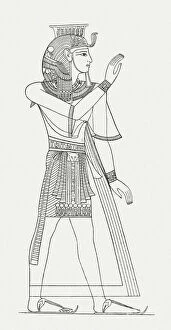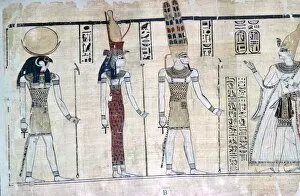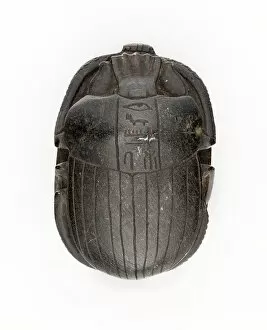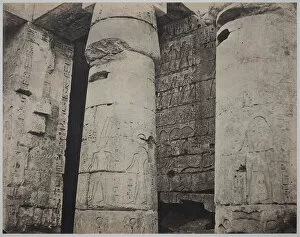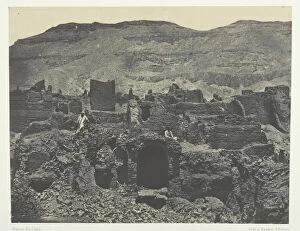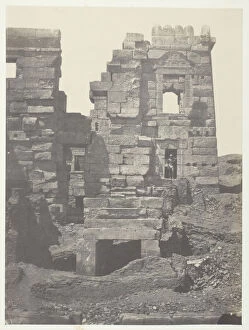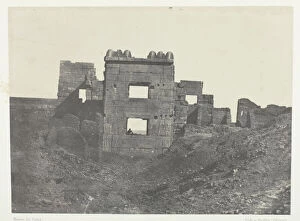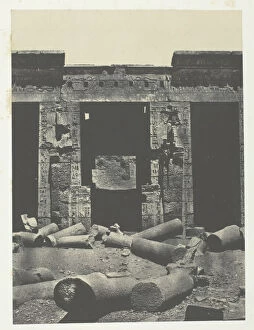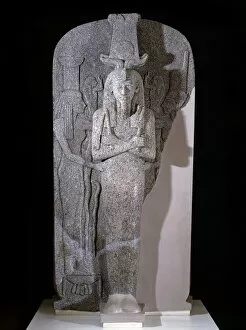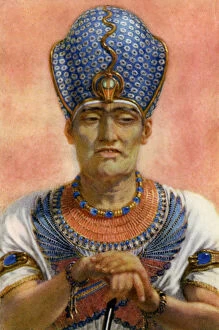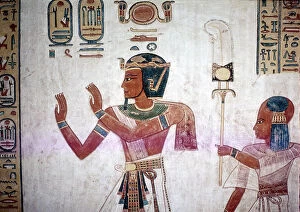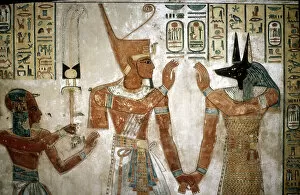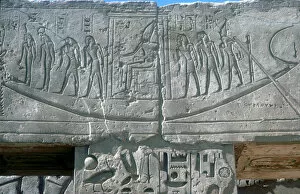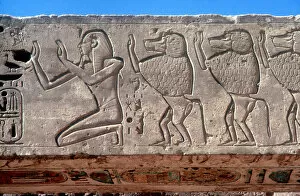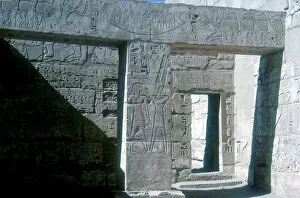Ramesses Iii Collection
Ramesses III, also known as Ramesses the Great, was a prominent pharaoh of ancient Egypt who reigned from approximately 1221 BC to 1156 BC
All Professionally Made to Order for Quick Shipping
Ramesses III, also known as Ramesses the Great, was a prominent pharaoh of ancient Egypt who reigned from approximately 1221 BC to 1156 BC. His legacy is captured in various historical artifacts and architectural wonders that have survived through time. One such artifact is a wood engraving published in 1881, which depicts the majestic figure of Ramesses III. This portrayal gives us a glimpse into his regal appearance and the reverence he commanded during his reign. The Great Harris Papyrus, dating back to the reign of Ramesses IV around 1200 BC, provides valuable insights into the administrative achievements and political events of this era. It serves as an important document shedding light on the governance and policies implemented by Ramesses III's successors. A ring bearing the inscription "Ramesses II, Beloved of Amun" showcases not only his name but also highlights his devotion to Amun-Ra, one of Egypt's most revered deities. This symbolizes his religious piety and underscores the significance of religion in ancient Egyptian society. A rosette discovered at the Temple offers a glimpse into the intricate artistry prevalent during this period. The delicate craftsmanship displayed on this ornamental piece reflects both beauty and symbolism associated with Pharaohs' divine authority. Another fascinating artifact is a heart scarab belonging to Amun-Mes, a worker during Dynasty 19 under Ramses II's rule. This scarab served as an amulet believed to protect its owner's heart during their journey through eternity after death—an embodiment of ancient Egyptian beliefs surrounding afterlife rituals. An exquisite ring attributed to Ramesses-mry-Amun from Dynasty 20 further exemplifies how jewelry played an essential role in expressing power and status among royalty during this era. Its intricate design suggests opulence while reinforcing loyalty towards Amun-Ra. Medinet Habu stands tall as Ramses III's mortuary temple, showcasing his architectural prowess and commemorating his reign.

